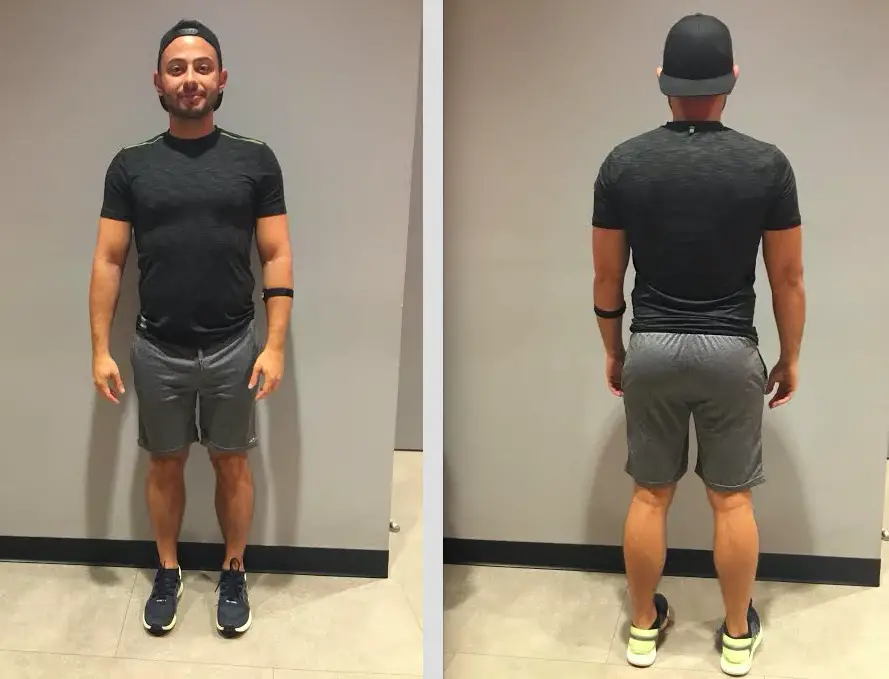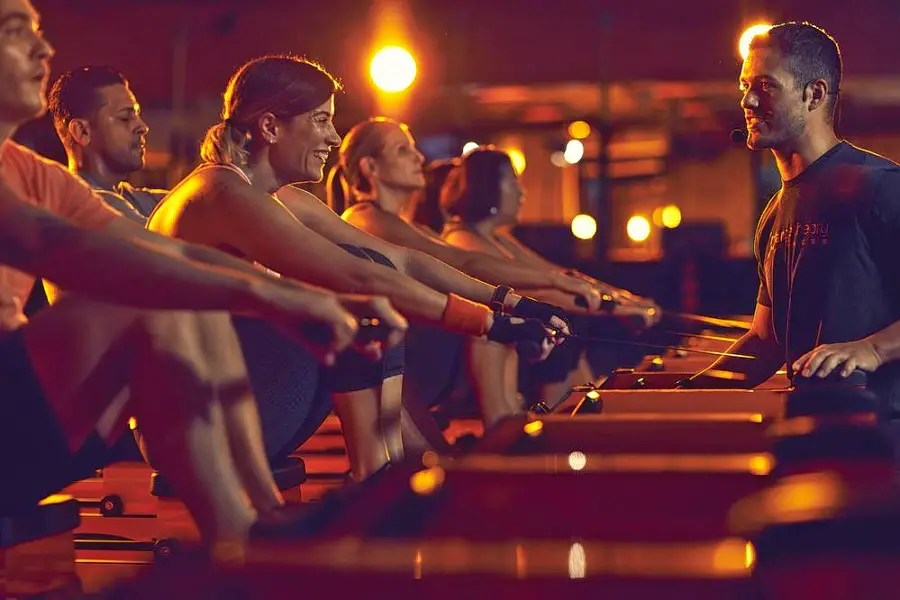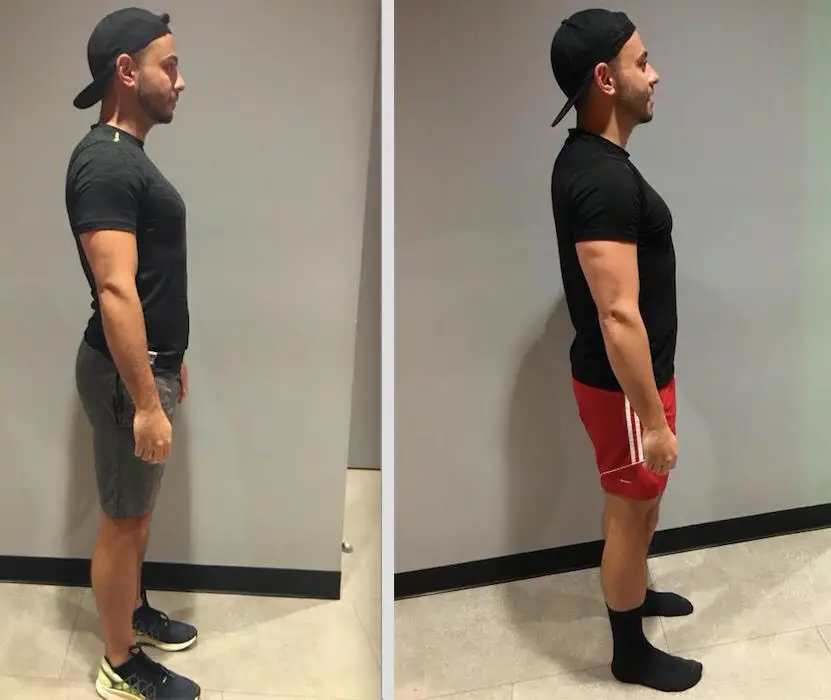How Orangetheory Helped This Food Editor Get Back in Shape

Much to the frequent envy of family, friends, and colleagues, I was blessed with a decent metabolism. It no longer lends itself to the skin-and-bones frame of my youth, but I can easily house 4,000-plus calories in a single sitting, release a single belch, and walk away feeling like myself again. But in the last few years since assuming the role of food editor, my age (31) has caught up with my inability to understand portion control, and my denial of this realization has weighed as heavy as the pounds I’ve amassed. All good things take a toll, and that toll presented itself in the form of a very happy palate, but an angry and untoned midsection.
It should come as no surprise that I felt my worst after the holidays last year. Weeks of work dinners and travel were piled with Christmas cookies and peanut brittle, which were then topped with this organic chocolate hazelnut spread that I essentially put on everything. I entered 2019 feeling less than satisfactory, and while I or a doctor wouldn’t have diagnosed myself as obese, I certainly swapped a significant amount of muscle definition with skin that was screaming, “What the hell are you doing to me and why is the dermis now a layer of actual butter?” I knew I had to do something and I had to do it fast.
New Year, New Me
If there’s one workout fad that was having a New Year’s resolution moment (sorry, Crossfit), it was Orangetheory. I heard several people, including my super-fit cousin Erin, tout its health benefits and its guarantee to help participants drop pounds quickly. Pairing that promise with my friend Dominick Mangine’s appointment as Orangetheory Midtown West’s master trainer, it was hard not to pass up the opportunity to test it out. Also, try telling this face and this body no. You will fail.
My decision to join also happened to coincide with an eight-week Transformation Challenge that the studio was hosting, requiring participants to attend at least three classes per week for six out of the eight total weeks. Despite having two upcoming trips where I knew I’d be eating in excess, the timing was perfect.
I want to preface the telling of my journey by saying I know how important a diet’s role is in yielding significant health changes. You—and you alone—must make conscious decisions about eating better and limiting the sugary indulgences that dietitians tell you to avoid. I did kick things off by trying keto, but gave it up due to a fear of not being able to maintain an extended state of ketosis. You have to be extremely strict with carb intake and I knew my Oprah-level love for bread would lead to self-sabotage. As a result, I pretty much ate what I wanted for the entire duration of the Challenge, knowing that my results would be much different once I started to swap the weekly pastries, bagels, and french fries with kale, broccoli, and moringa.
Let’s Move!
When the initial weigh-in day arrived, I braced myself. After spending weeks in Chicago and Mexico and dining at some of the most notoriously decadent restaurants, it was my prediction that the scale’s number would probably be a number I hadn’t seen before. Was I accurate? Yes, yes I was. Those awful spinning digital numbers read 176.4 and I audibly gasped when I saw them. To put things into perspective, I’m 5-foot-8 and typically maintain a strong 170 with 163 being “in great shape.” Depending on your height and body type, 176.4 pounds may sound heavy or light, but this was an unusual amount for me and me only. Now I knew exactly where I stood and, frankly, it felt like I was standing in a pit of bubbling lava or a fire ant pile.

Before shots. Baby’s got *a lot* of back.
Rather than continuing to feel defeated (#typicaljoey), Orangetheory immediately created an environment where it was okay to start at any size or athletic ability. This certainly sounds like the clichéd mission of every fitness studio in the country, but there was something about the tone of the staff’s voices, the warmth of their smiles, and the enthusiasm in their personal success stories that felt both genuine and comforting. This was also a far cry from the diarrhea-inducing cultures found in other Manhattan gyms (cough, Crossfit). Working out in a class with other people can be a terrifying thing and I craved a safe space where everyone a) acknowledged this fear and b) attempted to remedy it.
Orangetheory classes, which can be purchased individually, as packages, or unlimited memberships (prices very by studio), are divided into different categories: endurance, strength, and power, with some days juggling all three. Exercises include treadmill, rowing, and floor work. This variety was particularly appealing to me, as everyone has strengths and weaknesses and, after successfully completing the N.Y.C. marathon in 2018 without training, I wanted to see what it would be like to *actually* have endurance and not just rely on adrenaline and the stubbornness of having to finish everything I start.
Perhaps Orangetheory’s biggest draw is the heart monitor, which places you in a zone (as displayed in real time on one of their many TV screens): gray = resting state, blue = light activity, green = moderate activity, orange = strenuous activity, and red = untimely death. The number of minutes in your orange and red zones equates to your splat points, and while it’s the goal to hit 12 in each class, it’s good to strike a balance among all zones so you’re burning calories both in session and beyond (during a resting state). Orangetheory’s personalized app also keeps track of how many calories you burn, in addition to the predicted number of steps taken. Needless to say, this track of progress using concrete data made things much more motivating.
Getting My Groove Back
At first, the pivot back to exercising regularly was challenging for me. As I ran, I felt like I was carrying a hula hoop of Jell-O around my waist and weighted blocks around my knees. But as early as week two, the pain began to subside and my muscle and heart strength went into overdrive. I was shocked at how quickly my body adjusted to the diversity of workouts, especially given how long I was out of the saddle.
I also never felt like I was competing with anyone other than myself. Employees and classmates became friends and trainers became inspirations, with Dominick, despite his tough love and inclination to tease me, genuinely being the most caring, committed fitness professional I have ever met. As a former O.G. member of a very popular N.Y.C. gym, this was a more elevated, well-rounded experience. You’re held way more accountable with a heart monitor; you’re not crying about never looking like your supermodel trainer; and there is the great, albeit awful, addition of the rowing machine, which added a different type of cardio (and is now the bane of my existence).

Torture machines. I don’t know why this woman is smiling. Courtesy of Orangetheory Fitness Midtown West.
Eight weeks passed before I could catch my breath. During this time, I went on bingefest trips to Vegas and Florida, and I fully intended to step back on the scale after I got back and maybe lose a pound or two (which I would have been happy with). Frankly, my satisfaction with the program was derived from my competitive treadmill times, decent rowing form, and daily derriere compliments (basically the nicest thing you can say to a gay boy). I was flabbergasted, however, to find that I lost a total of 7.4 pounds. In fact, I even placed third for men in the overall Transformation Challenge, based on the percentage of pounds lost.

Before and after. Oh hey, tricep. Fancy seeing you there.
Dear Future Self
Eating gluttonously may seem like a glamorous job, but weight gain has been an inevitable side effect. I now take relief in knowing that I’ve found a healthy outlet to offset the unhealthy aspects of my life. The beauty of Orangetheory is that it only takes three to four hours a week to commit and see changes (considering I regularly partake in sit-down dinners that last upwards of four hours, there’s honestly no excuse for me). Plus, that cacio e pepe at Via Carota now tastes SO much better after sweating it out for an hour in class beforehand.
I know we’re all skeptics when it comes to fitness trends and what the experts are saying. There’s a ton of contradictory literature about what’s working, what’s not, what’s going to kill you, and what’s going to make you stronger. And like I mentioned, I’ve never felt the real struggles of being clinically overweight. But I have felt the challenges of being uninspired or cynical or just plain exhausted, and Orangetheory may have been the first to exceed this jaded New York food editor’s loftiest of expectations.
[page_popup id=”1″]



